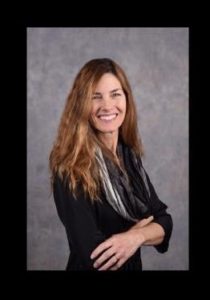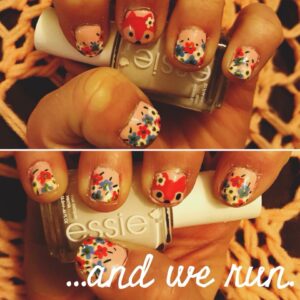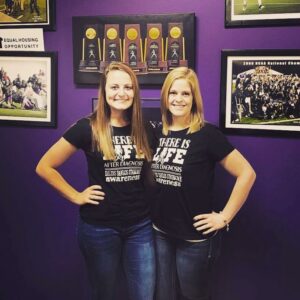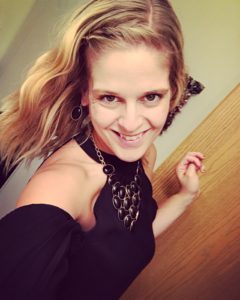If you have a chronic pain condition, you probably know just how much work it is to exist. I read one of those internet memes the other day that had me thinking. It said something like,
“No, you’re wrong. I’m not faking being sick. I’m faking being well.”

It made me laugh for a second. If you have EDS and have ever parked in a handicapped parking space without needing a wheelchair, you have probably had at least one person tell you not to park there. I have been accused by multiple people of seeking attention or pretending things are worse than they really are.
After I laughed, though, I started crying. You see, my pain has been absolutely out of control lately. I started a new job just under two months ago and my doctors and I already decided I can’t physically handle it. I have pushed myself every single day to get to my office and do my work, smiling and greeting people through pain, all the while my medications getting less and less effective and my wheelchair becoming more and more necessary. I used to come home after work at night and be able to enjoy myself. Now, less than six months in to my marriage, I find myself coming home from work and wanting to do nothing but lay in bed and watch TV because my body hurts so much. I work primarily in an office. I sit primarily behind a desk. Most people who see my at my job would never even guess that I get home and often choke back tears asking my husband to work knots out of my muscles and then cry as he has to push on the really painful spots because that’s the only way to get rid of them.
I quit my job. It broke my heart. I am not someone who quits a job after two months, but I know I cannot do it and I need to accept that, but I am still overcome with guilt thinking of what inconvenience I have caused others. I am someone guilty of measuring my value by my productivity and I do not feel productive.
I was back home over this past weekend for a family funeral. We lost a wonderful man. It was absolutely devastating–and the first time my extended family really saw me in my wheelchair. It was the first time my parents saw what happens to me after a full day of activity now. It was the first time people close to me realized how truly exhausting it is just to exist in a body that doesn’t work right. Between the emotional and physical pain, I am still tired almost a week later.
Why am I writing this post that seems like me just whining about how hard it’s been to be me lately (even though I promise you I actually do like being me)?
Because it can be lonely here and it should not have to be.
I am making a conscious choice to share these massive struggles with you, because I’ve read the struggles of others lately and I do not want them to feel alone. I want to remind the world that just because someone has pretty makeup on and a cute outfit doesn’t mean they aren’t in incredible pain–in fact, that makeup and clothing might be their best effort to hide it. I want the others who are currently in pain that feels out of control to know there are others who are laying in bed wishing they could go do something and feeling guilty for holding others back.
I am 28 years old and I cried on my mother’s lap this weekend about wishing I had a normal body.
Kids with EDS feel that way, too. They need to know it’s okay to feel that way sometimes. They need to know not to live there. They need to know sadness and grief over their condition is natural, but isolation is dangerous. They need to cry to a parent or a friend instead of hiding their pain until they cannot bear it anymore. We lose chronic pain patients to suicide because their mental health becomes too great a burden as they wish and hope for a “normal body” and have no outlet for those emotions.
I have made many mistakes in the last few months. I have overlooked the struggles of others while enduring my own. We must all work to see pain in ourselves and pain in others. We must avoid the loneliness and isolation of chronic pain and chronic illness. We must allow our emotions to have an outlet before they take control. When you lose another thing in your life because of this crappy condition, you are allowed to be angry. You are allowed to be sad. Your life, though, it is still beautiful. You are still wonderful. I think you will find in recognizing others’ pain, you may find relief and comfort for yours.
I may not be able to do the jobs I hoped I could do. I had dreams I can no longer achieve due to my physical limitations, but I also have new dreams I wouldn’t have if I didn’t have EDS. I’m going to work on those for a while. I’m going to remind myself of all the beautiful people in the world who don’t care if I look pretty and say I hurt; they believe me anyway (and want to know the name of my eyeshadow palette so they can look pretty through the pain, too).
Remember: I am here. We are here. Stay here.


 at means we are celebrating all things mom. Here at EDS Wisconsin, many of us have shared and sought feedback about what our moms were like, what it means to be a mom to an EDS kid, and what Mother’s Day means to us. I asked my mom, Janell Armstrong, a few questions this morning and if I could write about her in my blog—mostly because I remember vividly what dealing with my health was like as a child and now that I’m 27, I wanted to hear what that was like from her perspective. So, I asked my mom the hardest part of raising a child who was clearly ill with SOMETHING but un-diagnosed. Then, I asked my mom the hardest part about having a child get diagnosed with an incurable condition at 25—and changing all of those things that happened in my youth.
at means we are celebrating all things mom. Here at EDS Wisconsin, many of us have shared and sought feedback about what our moms were like, what it means to be a mom to an EDS kid, and what Mother’s Day means to us. I asked my mom, Janell Armstrong, a few questions this morning and if I could write about her in my blog—mostly because I remember vividly what dealing with my health was like as a child and now that I’m 27, I wanted to hear what that was like from her perspective. So, I asked my mom the hardest part of raising a child who was clearly ill with SOMETHING but un-diagnosed. Then, I asked my mom the hardest part about having a child get diagnosed with an incurable condition at 25—and changing all of those things that happened in my youth.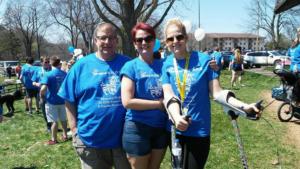

 Love you, Mom.
Love you, Mom.
